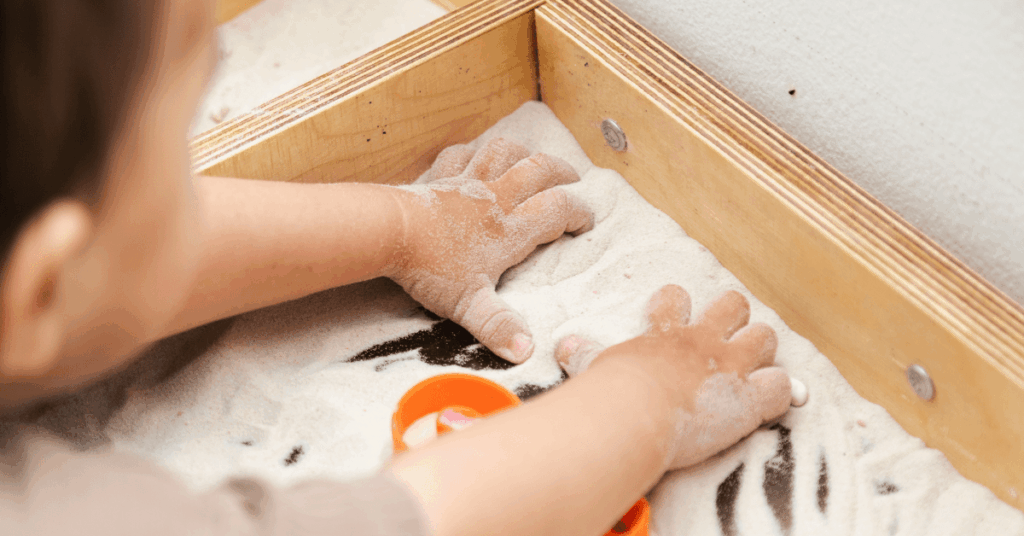Ten tips and five strategies to get your child to go to sleep
By Caroline de Fina and Hannah Maynard
One of the most common issues families struggle with is the night-time routine.
For many of us, getting our little ones to go to bed (and to sleep) is about as easy as dressing an octopus.
It can require the skill of a diplomat, the strategy of a chess player and the endurance of a marathon runner.
But never fear…help is at hand.

Why won’t they sleep?
Firstly, we need to understand why a child is reluctant going to bed.
This will determine the best strategy for sleepy time success.
Some good questions to ask are:
- Are they overexcited, too full of beans?
- Are they engaging in highly motivating and stimulating activities before bedtime?
- Are they hungry?
- Is it too hot in the room?
- Are they scared? Do they have nightmares? Are they scared by monsters under their bed?
- Are they refusing to go to sleep by themselves, because they want you there with them
- Are they happy to get into bed, but become upset when you leave the room?
There are many different reasons why children might refuse to go to bed; it’s not exciting, they’re scared, they want company and so on.
Depending on the reason, we need to adapt our strategy.
This may include taking an environmental approach, a behavioural approach or a sensory approach.
Night time routines and the child’s sleeping environmental are key factors in getting children to go to sleep successfully.
Ten top tips for winning the night time battle
1. Set up a regular, calming and positive bedtime routine
Find out what activities are relaxing for your child and use them to help them wind down and prepare for bed.
This may be reading bedtime stories, playing with puzzles or Lego, drawing etc. Incorporate this into a regular night time routine.
This might look something like dinner, bath, then a relaxing activity and then bed.
Time it so that they start to wind down approximately 30 or more minutes before bedtime.
In busy households it is hard to not rush the routines when time is tight but having enough time to wind down and to wind down together with a caregiver providing a lot of attention and availability can help children feel secure and relaxed before bed.
Although there are a lot of busy household jobs to do at this time of day, putting the time and attention aside to do this well and to approach the end of the day in a positive way with your child can help minimise some of the bedtime challenges for most of the reasons listed above.
2. Put them into bed at the same time every night
Keeping bedtimes and wake up times regular helps body clocks get into a rhythm.
Over time they will naturally begin to wind down as bedtime approaches.
Keep the time consistent on weekdays and weekends (no more than one hour difference is recommended).
3. Avoid over-stimulating activities before bed
We recommended avoiding all forms of technology (e.g. phone, TV, DVD, iPad) an hour before bedtime, as this makes it harder for the brain to wind down.
Too much physical activity before bed can also over-stimulate children, as well as raise their body temperature making it difficult for them to go to sleep.
4. Get them active and outside during the day
Exercise during the day and exposure to sunlight helps assist with sleep at night.
5. Eat only healthy snacks before bed
Avoid large meals, energy-rich foods and caffeine before bed-time (including coca cola and chocolate).
It is recommended caffeine is avoided four to six hours prior to bedtime.
A small light snack before children brush their teeth may assist them to settle for sleep if they are prone to getting hungry.
6. Create a cosy sleeping environment
Make sure your child’s sleeping environment is conducive to sleep.
For example, make sure the room is:
- Quiet
- Dimly lit (either total darkness or with a night light if they get scared)
- A comfortable temperature. Science shows that the body actually needs to be a certain temperature (not too hot, not too cold) before our brain signals us to fall asleep. You may need to consider using a fan or opening a window; changing pyjamas to a breathable fabric like cotton; or adding or taking away layers of bedding. You may even want to invest in bedding made from thermo-regulating materials.
7. Limit daytime naps
Reduce daytime naps based on a child’s age and development.
If a child is five years or older, it’s best to avoid daytime naps.
Limit daytime naps to 15-20 minutes, otherwise sleeping during the day will make it harder for children to sleep at night.
8. Send them to bed sleepy but not asleep
Aim for your child to go to bed sleepy but awake, so they can fall asleep relatively quickly by themselves (within 20 minutes), in the same place as where they sleep all night.
This helps to develop a positive sleep association with their bed and will help them to be able to self-settle more easily when they awake during the night.
9. Use comfort toys to help the transition to bed.
A child may benefit from a transitional object to help them transition to bed and sleep (e.g. blanket, teddy).
10. Foster independence in going to sleep
Children who fall asleep without parental assistance are less likely to ‘signal’ parents when they wake at night and will be more likely to self-soothe back to sleep.
Five behavioural strategies to make it easier for children to go to sleep
So we have our top ten tips for making the bedtime routine easier.
Below are the top five positive behavioural strategies that can assist with achieving a smooth nightly routine.
1. Set limits
If your pre-schooler stalls at bedtime, be sure to set clear limits ahead of time, such as how many books you will read.
Set a habit of only reading each book once.
Repeating the same book over and over again can be a really effective delaying strategy that your little one will clue on to very quickly!
2. Ignore complaints or protests
Ignore your child’s complaints or protests about bedtime as much as possible and avoid discussions or arguments that may lead to a struggle.
Calmly let your child know it is time for bed and continue with the routine.
Stay positive and even keep a sense of humour where possible to stave off any battles.
A calmer and happier child is one who will approach the bedtime routine more positively.
3. Calmly deal with crying or yelling
If your child is yelling or calling out to you but remaining in his bed, remind him one time that it is bedtime.
If he continues to be upset, you can check on your child, but make sure the visit is brief and non-stimulating.
Don’t soothe or comfort too much during these visits and don’t get into a long discussion.
Maintaining a sense of calm will keep the atmosphere you need for bedtime and also keep messages consistent for the next night, and the next night, and the next night.
4. Return them to bed
If your child gets out of bed or comes out of his room, calmly return him to bed.
For some children, simply returning them to bed multiple times works when kept up consistently for a couple of weeks.
5. Reward success
Soon after your child awakens in the morning, reward them for what they did well the night before.
Make sure they know that you are pleased, proud and happy and that having a good sleep is going to help them have a good day.
Don’t dwell on any challenges from the previous night.
Give your attention to your child’s efforts and steps towards successes.
Want to learn more?
At Early Start Australia, we offer a range of early childhood intervention services, such as children’s occupational therapy, psychology, paediatric physiotherapy, and speech therapy for kids, so you and your child can move forward with confidence.
Our multidisciplinary team will work tirelessly together with you to understand your child and how we can help them with the right strategies and tailored therapies
Like you, we want to give your child every opportunity for a happy and healthy life.
If you want to learn more or see how we can assist you in giving your child the best early start to life, please give us a call.
With a local clinic near you, we are ready to give you a direct assessment of your child and work on reaching your family’s goals.









